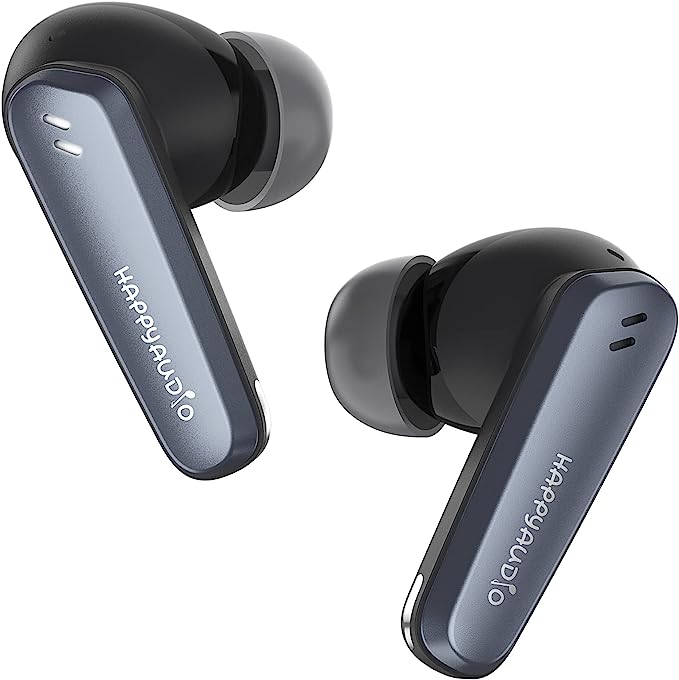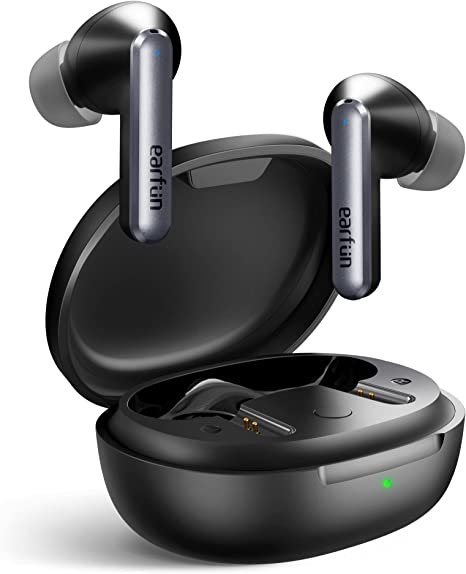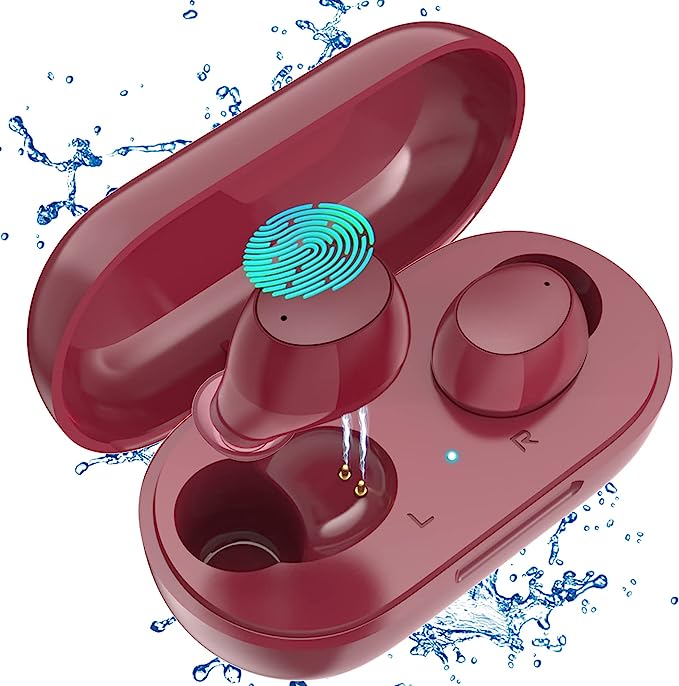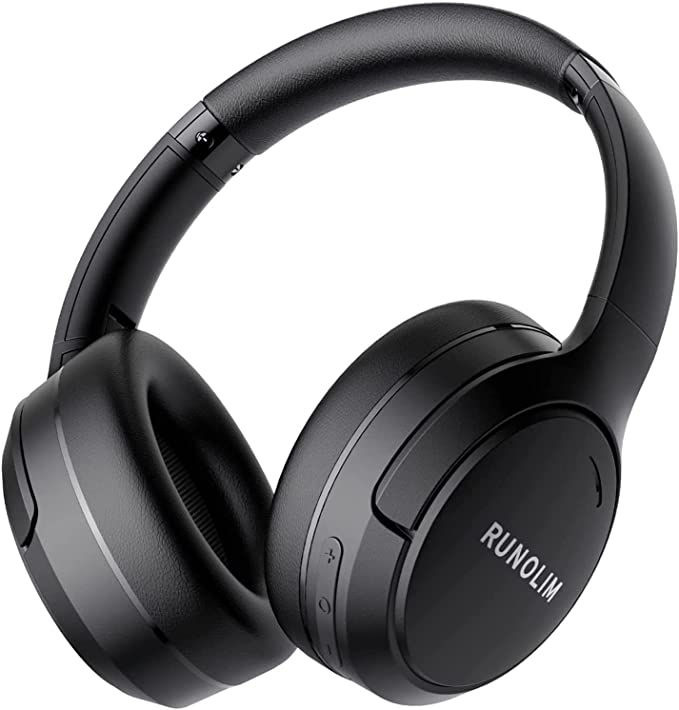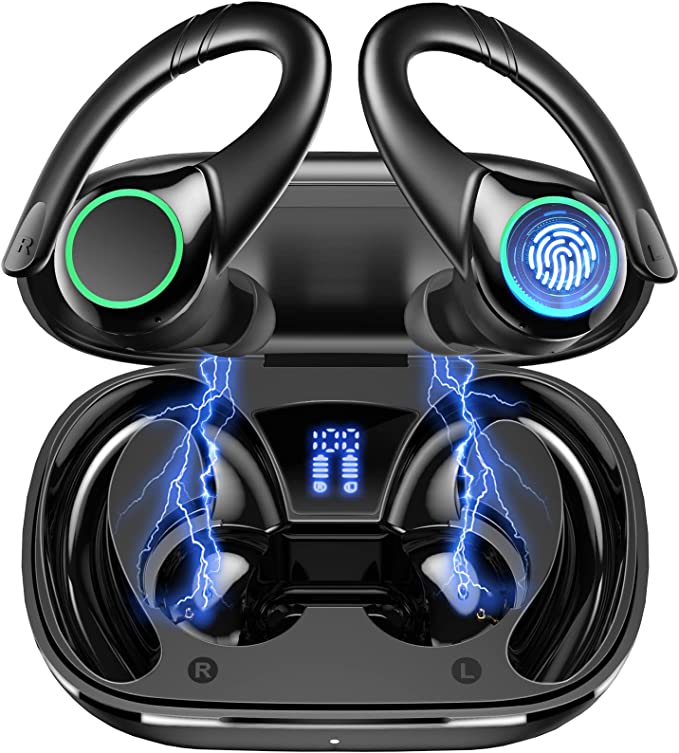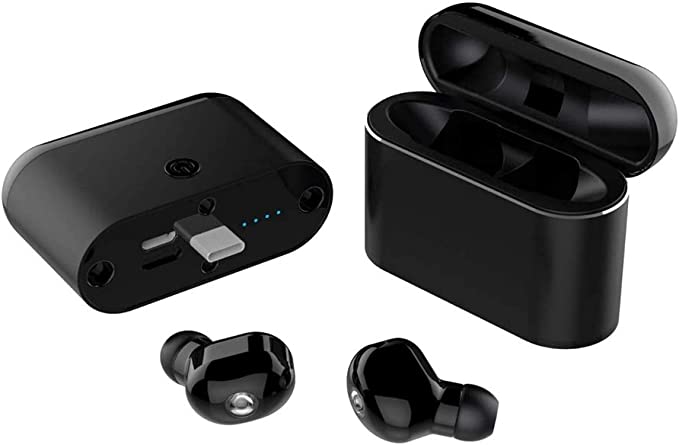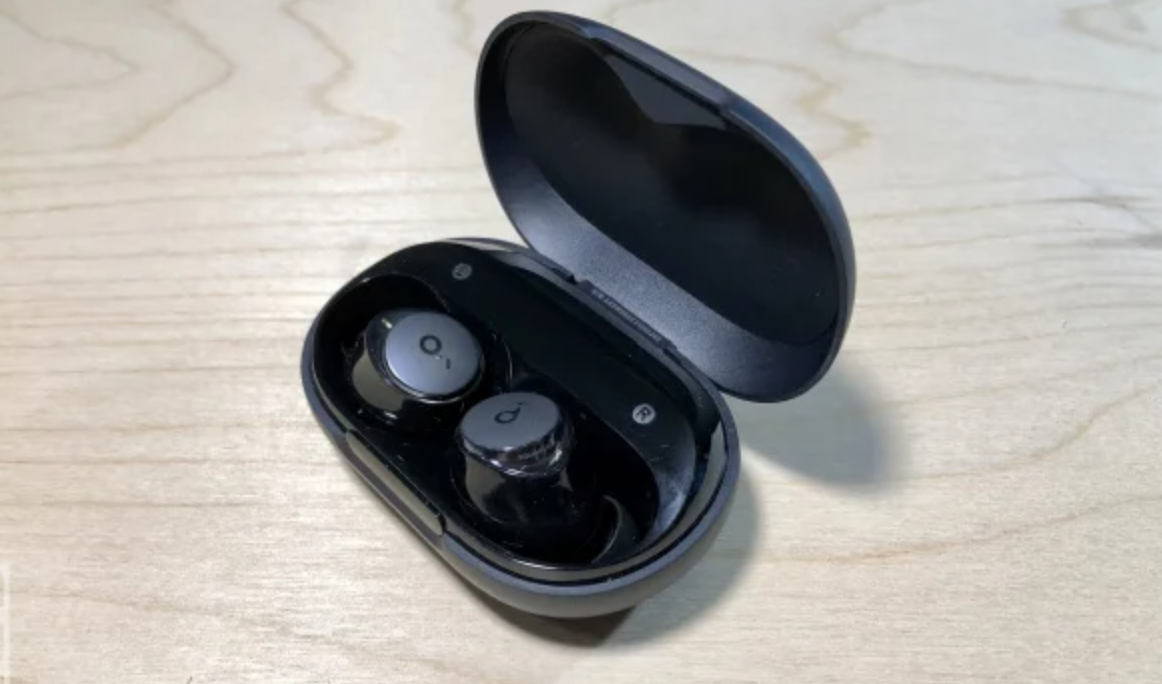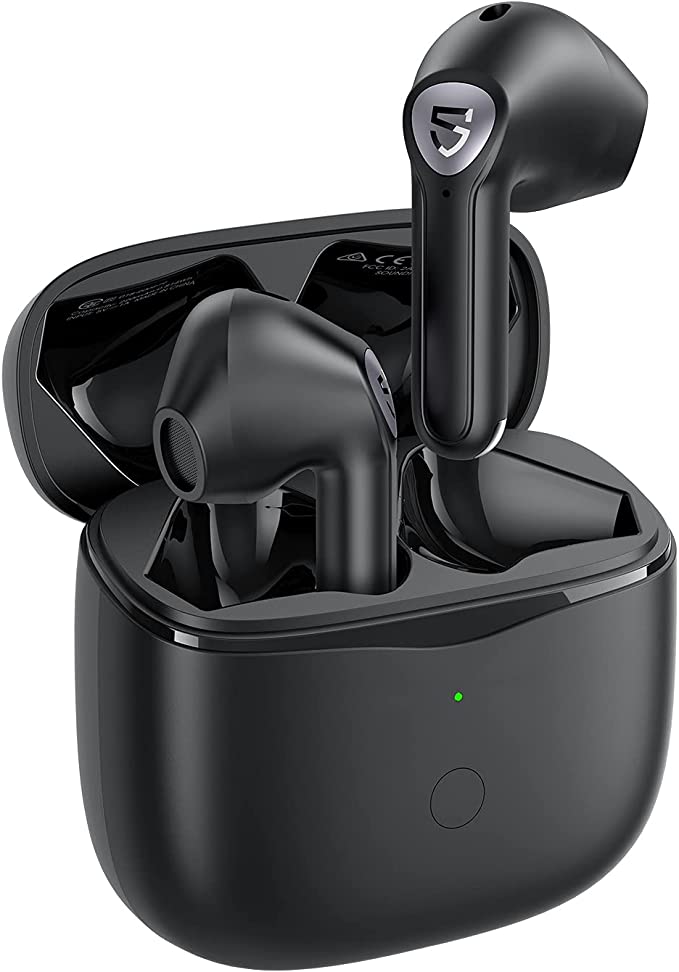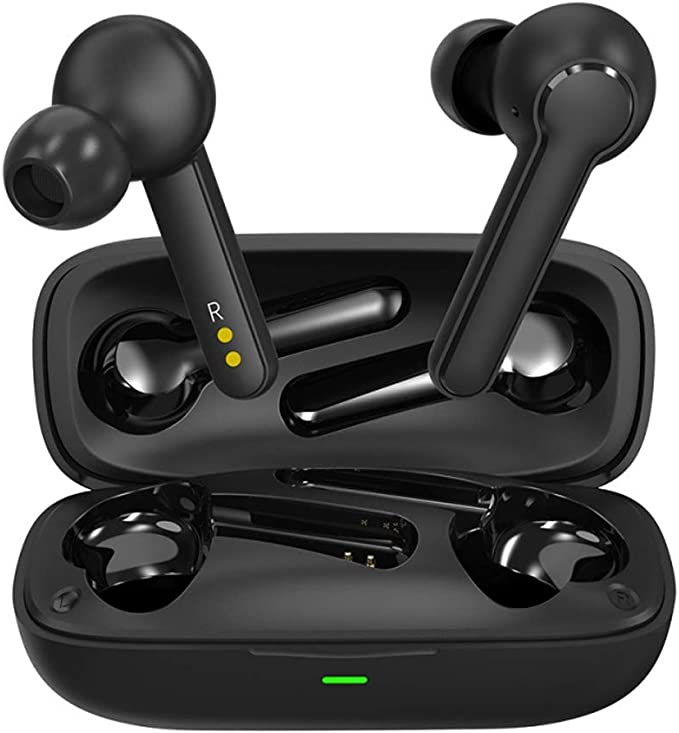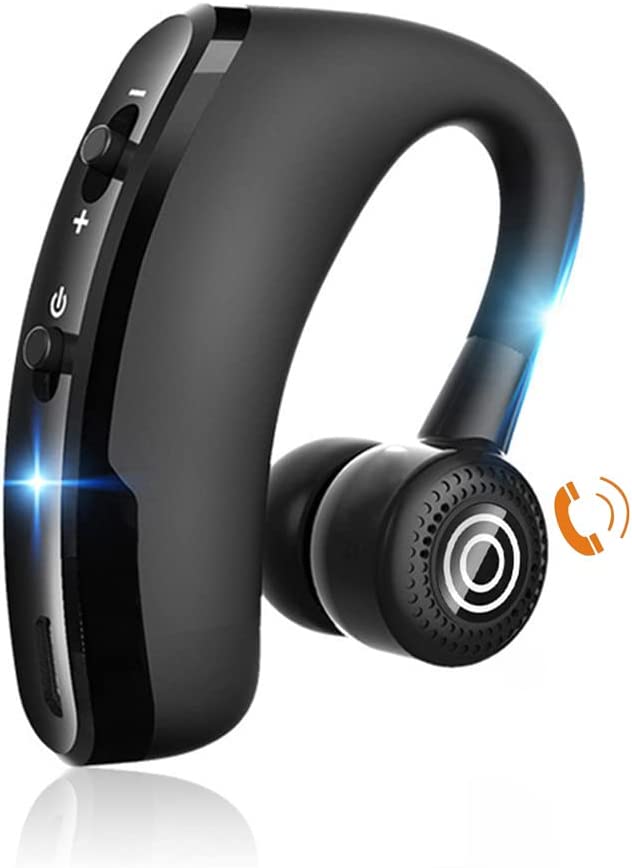KINGSTAR J5 Wireless Earbuds: Budget Buds with Surprisingly Decent Sound
Update on June 28, 2025, 11:34 a.m.
Ever felt like you need a degree in electrical engineering just to buy a pair of headphones? You stand before a wall of options, digital and physical, all screaming acronyms at you. “Bluetooth 5.2,” “IPX5,” “HiFi Stereo,” “Noise Canceling.” It’s a chaotic battlefield of marketing terms. But what if I told you the key to navigating this chaos lies with a 10th-century Viking king and a Golden Age Hollywood actress?
It sounds absurd, but it’s true. The very technology that connects your phone to earbuds like the KINGSTAR J5 is named “Bluetooth” after Harald “Bluetooth” Gormsson, a king famed for unifying the warring tribes of Denmark and Norway. The name was chosen to symbolize the unification of different communication protocols. And the foundational science for its secure, interference-free connection? That rests on the principles of frequency-hopping, a concept co-invented during World War II by actress Hedy Lamarr to guide torpedoes securely.
This is the fascinating truth about the technology in our pockets: it’s built on layers of history and science. So, let’s use that same spirit of discovery to decode the promises on the box of a product like the KINGSTAR J5, and in doing so, transform you from a confused consumer into an empowered expert.

The Wireless Handshake, Sealed by a King
First up is Bluetooth 5.2. It’s easy to see this as just a number, assuming bigger is better. But its real meaning is far more practical. Think of it as the quality of a handshake. An older Bluetooth version might be a weak, fumbling grip, prone to dropping the connection if you put your phone in the wrong pocket. Bluetooth 5.2, governed by the global Bluetooth Special Interest Group (SIG), is a firm, confident, and efficient handshake.
For you, this translates to a stable link that’s less likely to stutter in a wirelessly crowded café. It’s also designed to be more energy-efficient, sipping power from both your phone and the earbuds, which is crucial for these tiny, battery-powered devices. It’s the reliable, invisible thread that makes the entire wireless experience possible, fulfilling King Harald’s legacy of seamless unity.

Decoding the Armor: What IPX5 Really Means
Next, you’ll see a claim like “IPX5 Waterproof.” This isn’t just a vague promise; it’s a specific rating from a global standard, IEC 60529, set by the International Electrotechnical Commission. Let’s break down the code.
- IP stands for Ingress Protection—protection against things getting inside.
- The first number, represented here by an X, rates protection against solids like dust. An ‘X’ simply means it hasn’t been tested for a dust rating.
- The second number, 5, rates protection against liquids. A ‘5’ means the device can withstand a sustained, low-pressure jet of water from any angle.
So, what’s the real-world translation? Think of IPX5 as a high-quality raincoat for your earbuds. It’s more than capable of shrugging off sweat during an intense workout, a jog in the rain, or an accidental splash from the sink. It provides peace of mind for everyday life and fitness. But, just as you wouldn’t go swimming in a raincoat, you shouldn’t submerge IPX5-rated earbuds. The science gives us a clear boundary: protection, not invincibility.

The Great Divide: The Two Worlds of “Noise Canceling”
Here we arrive at the most bewildering and often misleading term in audio: “Noise Canceling.” This single phrase describes two vastly different technologies, and understanding the difference is the most powerful tool you can have. The price and design of an earbud like the KINGSTAR J5 give us a crucial clue as to which world it belongs to.
Path One: The Fortress (Passive Noise Isolation - PNI)
This is the brilliant application of basic physics. Passive Noise Isolation works by creating a physical barrier that blocks sound waves from entering your ear canal. The In-Ear form factor of the J5, with its soft silicone tips, is engineered for this very purpose. When you push the earbud in and get a snug seal, you are essentially building a miniature fortress wall around your eardrum.
This wall physically attenuates (or dampens) a wide range of frequencies, especially higher-pitched sounds like office chatter or traffic noise. It’s an elegant, effective, and cost-efficient method that relies on good design and materials. It’s engineering, pure and simple.
Path Two: The Sound Assassin (Active Noise Cancellation - ANC)
This is where things get much more complex and costly. True Active Noise Cancellation is an electronic marvel. It works like this:
- A tiny, outward-facing microphone on the earbud “listens” to the ambient noise around you.
- An internal processor analyzes that sound wave in real-time.
- It then generates a brand-new, perfectly opposite sound wave—an “anti-noise” wave.
- This anti-noise is played through the earbud’s speaker.
When the original noise wave from the outside world meets the internally generated anti-noise wave inside your ear, they cancel each other out in a phenomenon known as destructive interference. Think of it as hiring a highly-trained sound assassin to intercept and neutralize an enemy sound before it ever reaches you. This process, requiring sophisticated microphones, processors, and constant power, is why headphones with effective ANC command a premium price.
Given its accessible $20.99 price point, it is overwhelmingly likely that the KINGSTAR J5’s “Noise Canceling” refers to its expertly designed Passive Noise Isolation. And that’s not a bad thing—it’s just a different, more straightforward approach to the same goal: a quieter listening experience.

From Confused Consumer to Empowered Listener
So, where does this journey through history and science leave us? We’ve learned that the technology in our hands is more than just a list of features. Bluetooth is a legacy of unity. An IP rating is a universal language of durability. And “noise canceling” is a tale of two paths: the physical fortress or the electronic assassin.
A product like the KINGSTAR J5 becomes a case study in smart, practical engineering. It leverages the robust foundation of a modern Bluetooth standard and the simple elegance of physics to deliver a functional experience.

The ultimate takeaway, however, goes beyond any single product. It’s the realization that knowledge is your best tool. You no longer need to be swayed by ambiguous terms. You can now look at a pair of in-ear headphones and understand that their very design is a form of noise cancellation. You can see a price tag and make an educated guess about the technology inside. You are no longer just a consumer navigating a chaotic market; you are an empowered listener, equipped to choose not just what sounds good, but what makes sense.
